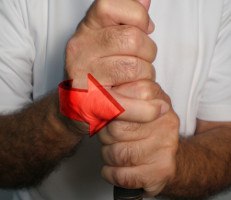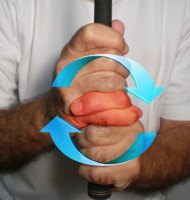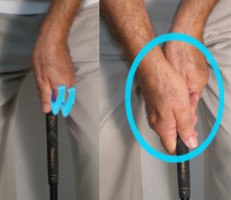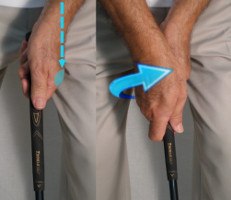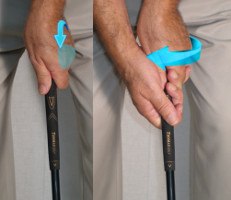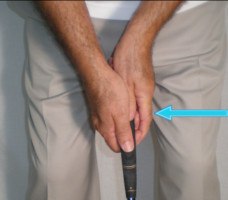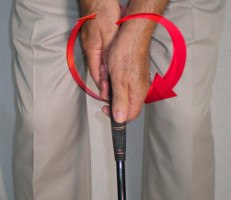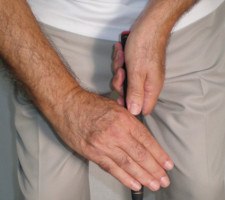|
Pros and Cons of Every Golf Grip Style |
Best Grip? Overlapping vs Interlocking |
Grip style: Interlocking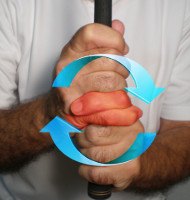 |
Hand position: strong |
Putting grip style / hand position: Cross-handed (left hand low)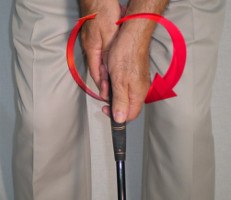 |

See Billy Horschel grip the golf club. See Billy Horschel launch the ball long and straight. See Billy Horschel win the last two tournaments of the 2014 playoff and claim the FedEx Cup.
If he wasn’t a household name before his late-season surge, Horschel is certainly a star now. The sixth-year pro from Florida waltzed to wins at the BMW Championship and Tour Championship with a display of great ballstriking and timely putting.
Horschel’s grip resembles many of his peers’: left thumb pad turned onto the top of the club, his glove’s logo aimed well right of target, while his right hand “V” (between thumb and index finger) aligns directly with his right arm.
This grip position is usually associated with power hitters like Harris English, and Horschel does, indeed, average better than 291 yards off the tee. (Not bad for a 175-pounder.) But he’s also highly accurate, ranking 26th on tour in fairways hit for 2014 at 67% while finding 70% of greens in regulation, good for fourth.
In other words, it’s possible to hit the ball very straight with a strong grip.
When putting, Billy Horschel’s grip is a standard cross-handed style – left hand beneath the right on and oversized handle, back of the left hand flush with his wrist, right wrist cupped. That left wrist position is critical to success with a cross-handed grip. The goal is to prevent the wrists from breaking down during the stroke, which is easy if you simply maintain the left wrist position from setup to finish.
Update:
Billy Horschel, a professional golfer on the PGA Tour, is known for using a unique grip called the “claw grip” or “Horschel grip.” This grip gained attention due to Horschel's success on the golf course. Here's how you can adopt the Billy Horschel grip:
- Begin by placing your lead hand (left hand for right-handed golfers, right hand for left-handed golfers) on the club as you would with a traditional grip.
- Instead of wrapping your trail hand around the grip in a conventional manner, create a split-hand grip. Position your trail hand (right hand for right-handed golfers, left hand for left-handed golfers) so that only the tips of your index and middle fingers touch the club's grip.
- Your trail hand's thumb and pinky finger should be completely off the club, while the ring and middle fingers are lightly touching the grip.
- To further establish the claw grip, curl your trail hand's index finger, creating a “claw-like” shape.
- Maintain a relaxed grip pressure, finding the right balance between control and comfort.
The claw grip is intended to help golfers with their putting stroke, providing a more stable and consistent method of holding the putter. It can also help reduce wrist movement and promote a more pendulum-like motion. Keep in mind that grip preference is highly individual, and it's essential to find a grip that feels comfortable and works well with your putting stroke.
